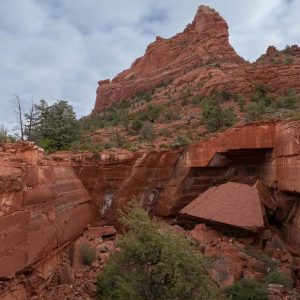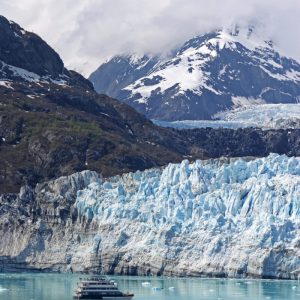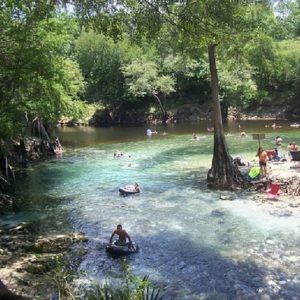![]()

Utah’s Capitol Reef National Park is reported to be “the least visited” of the state’s “Mighty 5” national parks. Still, while it does not host as many visitors as Arches, Bryce Canyon, or Zion, it has a lot to offer. So, in order to help you plan your visit, here are the 15 best things to do in Capitol Reef National Park.
Contents
- 1. The Highway 24 Scenic Drive
- 2. The Capitol Reef Scenic Drive
- 3. The Temple Of The Sun And Moon Viewpoint
- 4. The Burr Trail Scenic Byway
- 5. The Strike Valley Overlook
- 6. The Capitol Reef Visitor Center
- 7. The Fruita Historic District
- 8. Panorama Point
- 9. The Goosenecks Overlook Walk
- 10. The Sunset Point Hike
- 11. The Petroglyphs Panel
- 12. Hike The Capitol Gorge Trail
- 13. The Grand Wash Trail
- 14. The Cassidy Arch Trail
- 15. Hickman Bridge Trail
The 15 Best Things to Do In Capitol Reef National Park
1. The Highway 24 Scenic Drive

Found in the Fruita District, you will need no more than two hours to complete this scenic drive. In fact, you will more likely than not drive on part of this highway as you approach the park. Highway 24 takes you through the heart of the park and divides the districts of Cathedral Valley and Fruita along the rushing Fremont River.
On your scenic drive, you will see large rock formations and sandstone cliffs as you come to the popular historic Fruita District. You will find several of the park’s most popular attractions along this highway including Goosenecks Overlook, Panorama Point, and even Sunset Point. There’s no charge for this drive so if you’re on a budget, this is a good way to see some of the park for free.
2. The Capitol Reef Scenic Drive
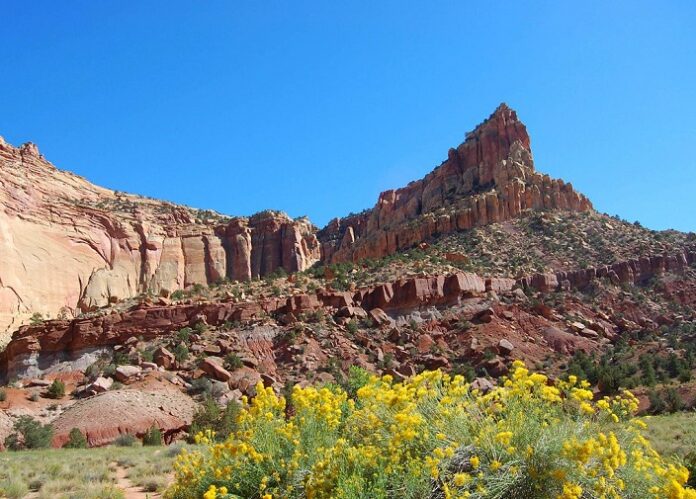

The Capitol Reef Scenic Drive will also take you through the Fruita District and will take you one hour or less to complete this eight-mile scenic drive. Again, your drive begins in the previously mentioned Fruita District. This time though it ends at Capitol Gorge Road.
There are numerous viewpoints along this drive that provide must-see views. The humble, unpaved Grand Wash Road gives you access to such noteworthy trails as the Cassidy Arch Trail. The Capitol Gorge Road goes on for another couple of miles after the official scenic drive ends.
In fact, the Capitol Gorge Trail offers the opportunity for crowd-free hiking. This is the only scenic drive that requires paid admission. Purchase a national park pass before you go or pay the $20.00 entry fee.
3. The Temple Of The Sun And Moon Viewpoint


Travel to the Cathedral Valley District, north of the Fruita District. You will need between three to five hours for this one. Cathedral Valley is a remote, rugged district in the park.
The Temple of the Sun and Moon is one of Cathedral Valley’s best attractions. Get a good look at this pair of arrowhead-reminiscent giants towering over the arid desert landscape. The best time to visit is at sunrise when the rough rocks seem to come alive with bright orange and red reflections from the shining sun.
If you’re driving a four-by-four vehicle, do the entire 58-mile scenic drive. It’ll take about five hours to complete, and your vehicle will have to ford a river. If you only want to see the famous Temple of the Sun and Moon, take the Caineville Wash Road to Cathedral Road. That route will require three hours.
4. The Burr Trail Scenic Byway


This byway will take you to the Waterpocket Fold District. The scenic drive will require between four and five hours. This drive will take you through a few major attractions including Glen Canyon National Recreation Area, Grand Staircase-Escalante National Monument, and Capitol Reef National Park.
To reach the trail from the Fruita District you can take the unpaved Notom-Bullfrog Road, which leads to Strike Valley Overlook. From the south, you can reach it at a place close to the Natural Bridges National Monument. You will encounter the famous Burr Trail switchbacks as you navigate harrowing turns up significantly steep elevation and rejoin Highway 12 in the city of Boulder. In fact, driving from there to Torrey is another great scenic drive.
5. The Strike Valley Overlook
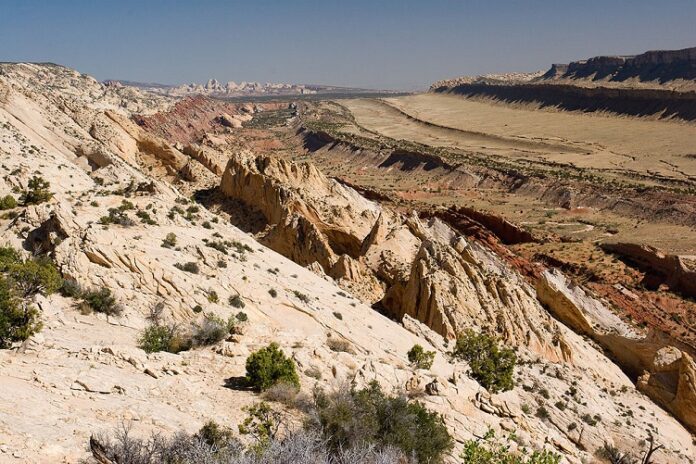

The Strike Valley Overlook in the Waterpocket Fold District is much like the Burr Trail Scenic Byway in that it too is a remote section of Capitol Reef and is visited by comparatively few people. Set aside at least five if not six hours here. Veteran visitors say it provides visitors “with unparalleled views” of the district.
If you’re coming from the west and wish to avoid the previously-mentioned Burr Trail switchbacks, take Highway 12 to Burr Trail Road. However, if you’re coming from the east and want to drive the switchbacks, take Highway 24 to Notom-Bullfrog Road. The overlook road is high clearance. Unless you have an AWD vehicle park on the side of Burr Trail Road and hike the six-mile round-trip access trail.
6. The Capitol Reef Visitor Center


You can find the Capitol Reef Visitor Center in the park’s Fruita District. It is open all year. Be sure to spend time there before going anywhere in the park.
Inside the center, you’ll see several different helpful informational displays. There’s also a museum focused on the area’s history and the local geology. This is also the place where you can talk to the National Park Service rangers and get current information on the road conditions and the status of the hiking trails as well. You can also get brochures, gifts, maps, and get your national park passport stamped. If you’re vacationing with children, be sure to see the family-friendly Ripple Rock Nature Center as well.
7. The Fruita Historic District
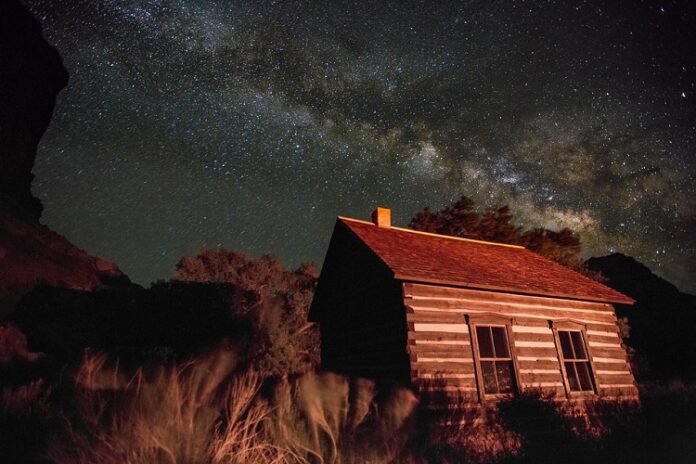

Venture to the center of Capitol Reef National Park. It is here you will discover the Fruita Historic District. Give yourself between 30 minutes and two hours here.
Here you will be able to see a number of historic buildings built by the pioneer settlers. This is where Mormon settlers set up shop in the late 17th century. See the Blacksmith Shop, the Fruita Schoolhouse, the Fruita Orchard, and Gifford House.
The Gifford Homestead is one of the Fruita District’s most visited historic buildings. The home was built in 1908 and was originally erected and owned by famous polygamist Calvin Pendleton. The Giffords became the owners two decades later. Visit between March 14th through October and purchase handmade fruit pies, jams, and jellies there.
8. Panorama Point
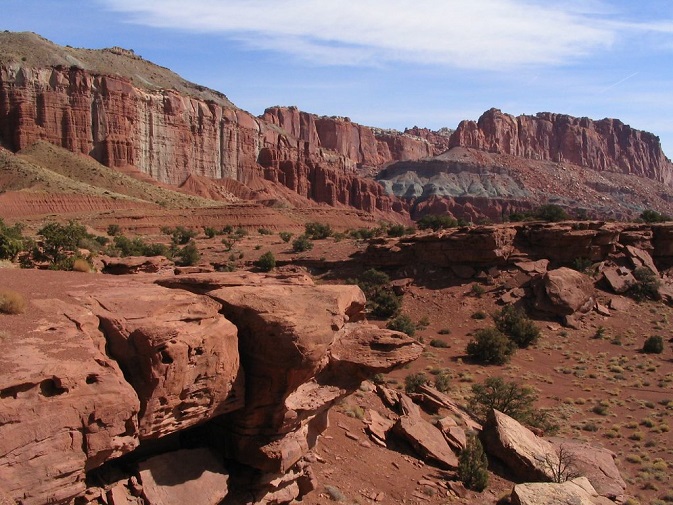

You will find Panorama Point just off Highway 24 in the Fruita District. Some say it’s one of the very best viewpoints overlooking well-known Capitol Reef. If you’re driving from Torrey, it’s the first major landmark you will come across too. This viewpoint is a great starting point for a visit to Capitol Reef. From there you can enjoy 360-degree views of the rough, scarlet landscape that gives the place its name. It certainly is memorable and worth at least a 15-minute stop!
9. The Goosenecks Overlook Walk


Spend half an hour visiting Goosenecks Overlook in the Fruita District. Once you leave Panorama Point, stay on the gravel road until you reach this spot. This 0.2-mile round trip will require a brief, uphill walk, but it is quite manageable for the majority of travelers. Interestingly, Sulphur Creek carved out the bend here. Marvel at the stunning views of Capitol Reef’s iconic red rocks and lush greenery.
10. The Sunset Point Hike
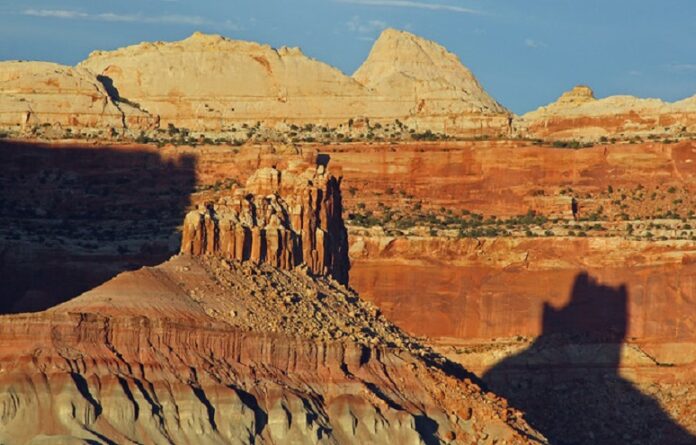

You can park your vehicle in the same lot that you’d park to see Goosenecks Overlook. This hike is easy as it is less than one mile and has an elevation gain of under 50 feet. You should be able to complete it in half an hour.
The walk from the parking lot to Sunset Point is a little bit further than the walk to the previously mentioned Goosenecks Overlook but veteran visitors say it is well worth the effort, especially right before sunset. Should you arrive at Capitol Reef sometime in the afternoon or even early evening, consider exploring popular Panorama Point and Goosenecks Overlook prior to Sunset Point at sunset in one trip.
11. The Petroglyphs Panel
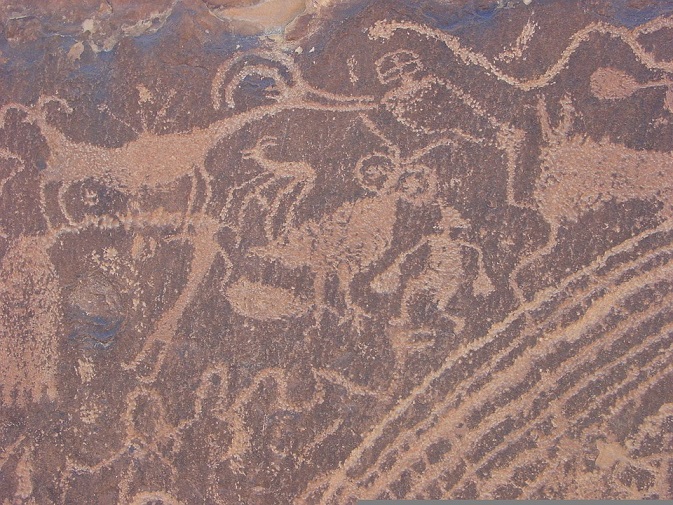

There is a spectacular panel of petroglyphs you should see here. It should only take half an hour. Prior to the arrival of the settlers, the land here was occupied by indigenous people. The petroglyphs here provide a way to get a look at their lives.
You will find these ancient rock art carvings off Highway 24 between Fruita and Hickman Bridge. They tell the tales of both the Fremont and the Ancestral Puebloan people. It’s just a brief walk to a place where you can see them.
12. Hike The Capitol Gorge Trail
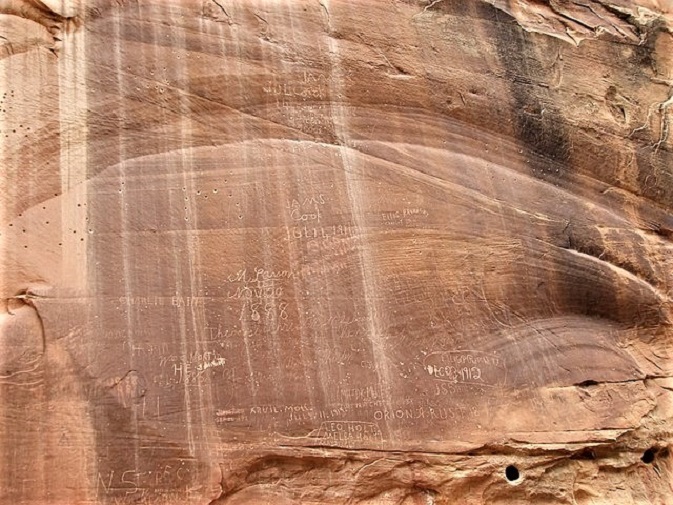

The Capitol Gorge Trail provides additional evidence that the Mormon settlers were here in the late 1800s. The hike itself is less than two miles. It is considered an easy hike with an elevation gain of only 80 feet.
You should only need an hour to complete it. One highlight here is the Pioneer Register, a sandstone wall into which is carved information about travelers. It includes the names of the miners and the settlers who were here more than 100 years ago.
The trailhead is located at the very end of the unpaved gravel road known as Capitol Gorge Road. It’s just off the Capitol Reef Scenic Drive. The trail will lead you through the narrow, vast canyons, which was also the only path early settlers had to get through the Waterpocket Fold.
You can also visit The Tanks, little water pockets that form small pools when they are filled by rain. Speaking of rainfall. It is always good to remember that canyons such as Capitol Gorge can flood during thunderstorms. So be sure to check the current weather report before you go hiking here. You can also stop in at the visitor center and check in with the rangers.
13. The Grand Wash Trail
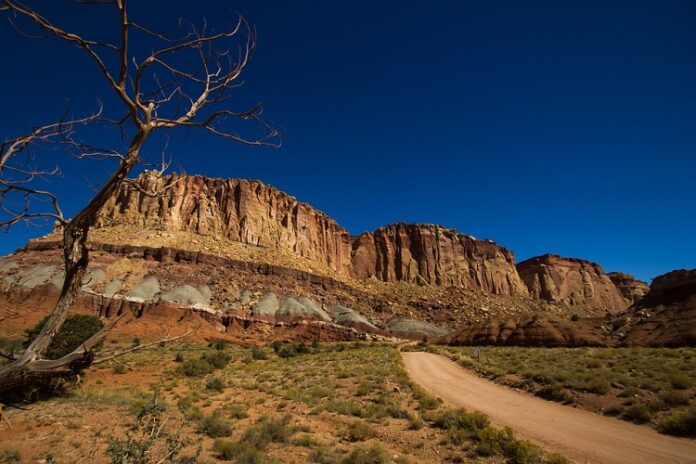
This hike is an easy one. It has a total distance of just under four and a half miles and an elevation gain of 200 feet. Give yourself two hours to complete it.
This (ahem) grand trail will have you hiking through the large canyon in Waterpocket Fold called Grand Wash. This hiking trail follows a spacious sandy canyon that only narrows occasionally as you admire the rock formations and colorful sandstone cliffs. There are two trailheads available for this out-and-back trail.
You can use the Cassidy Arch Trailhead off Grand Wash Road or the Grand Wash Trailhead right off Highway 24. Roughly a mile into your hike the canyon becomes more like a slot canyon. This section is called The Narrows.
14. The Cassidy Arch Trail
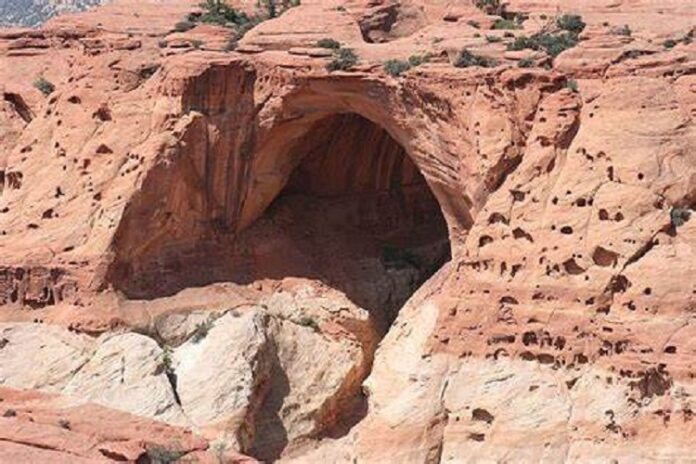

This trail is for the inexperienced hiker as it is rated (depending on the source) as either “strenuous” or moderately difficult. It has a total distance of almost three and a half miles and an elevation of 670 feet. Plan on a two-hour trek.
Despite the level of difficulty, the views along the trail make it one of the most popular hikes here. Interestingly, the trail is named after the wild west outlaw Butch Cassidy who once holed up here. You will find the trailhead along Grand Wash Road.
As you hike this slickrock trail you will be able to enjoy incredible views high above the great Grand Wash, the well-known gorge that goes through the upper portion of the previously-mentioned Waterpocket Fold, and the famous Fruita District. When you reach the end of the trail, you will see Cassidy Arch. (Oddly, Cassidy Arch is not so much an arch as it is a bridge.)
15. Hickman Bridge Trail
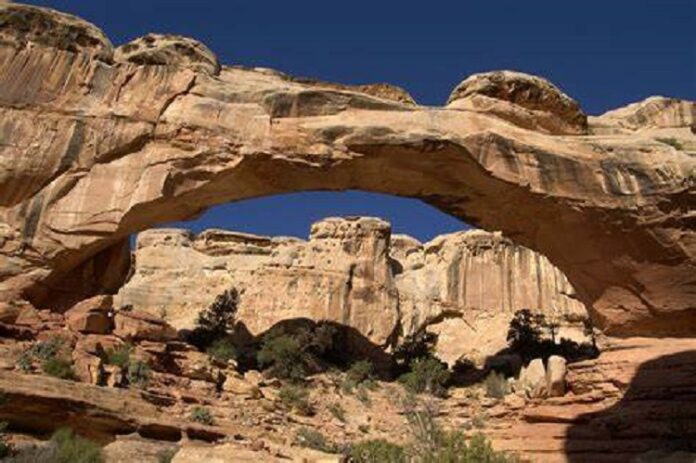

If you’d prefer a hike that is not as challenging as the Cassidy Arch Trail, then the moderately difficult Hickman Bridge Trail is for you. This hike is under two miles but has a relatively quick elevation of only 400 feet. Give yourself one hour to finish the hike.
This hike follows the river to a noteworthy viewpoint of the 133-foot Hickman Bridge. It is a well-known natural bridge that receives numerous visitors. Thus, this hike is also popular. As a general rule, the best time to hike any place in Capitol Reef National Park is from Spring to Fall since the trails can become very slick from ice and snow in the winter. Whenever you choose to visit though, you will always find something to do here.
